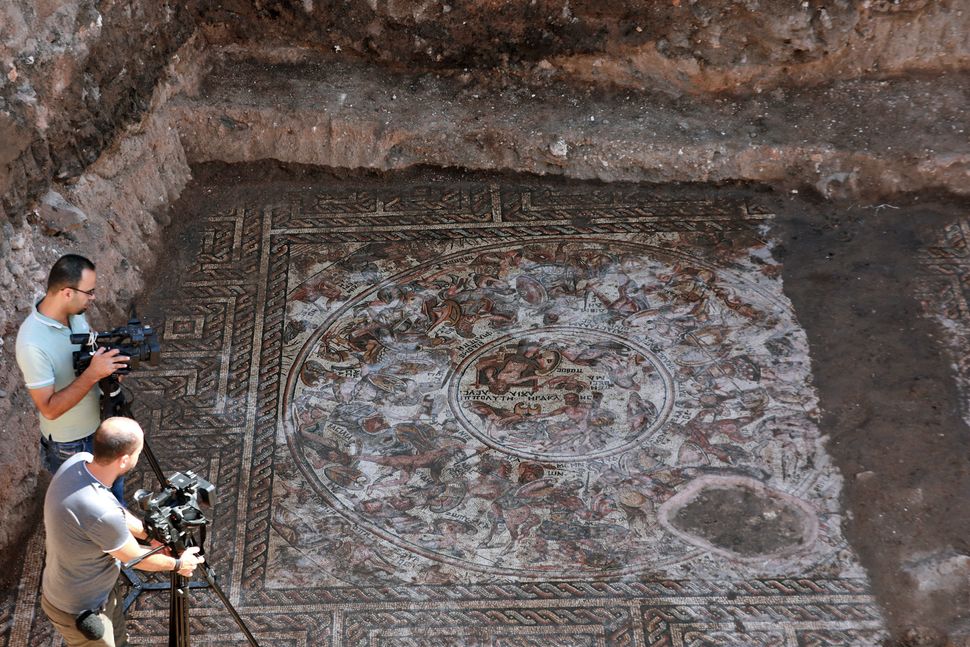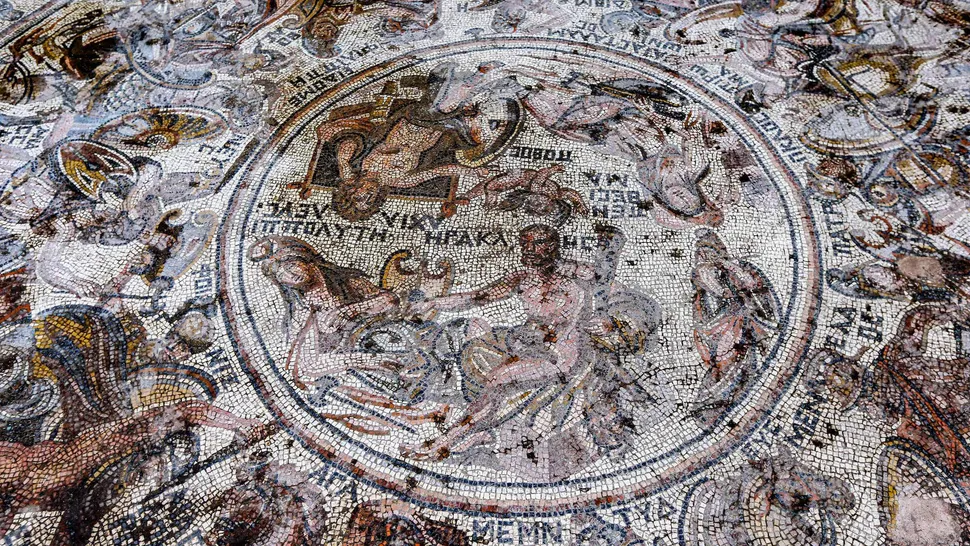Archaeologists in Syria have discovered a stunning mosaic featuring depictions of the Trojan War, Hercules and Neptune dating to the fourth century A.D.
Archaeologists in war-torn Syria have unearthed a stunning mosaic from the Roman era that features events from the Trojan War, the chiseled muscles of the Roman demigod Hercules and the powerful ancient Roman god Neptune alongside 40 of his mistresses.
The General Directorate of Antiquities and Museums, a Syrian government agency, discovered the 65.5-foot-long by 20-foot-wide (20 by 6 meters) mural in Rastan, a town in central Syria near Homs, a key battleground during the Syrian revolution, agency representatives announced on Wednesday (Oct. 12), according to the Associated Press (opens in new tab) (AP).
The agency uncovered the well-preserved mural — painstakingly made in ancient times with colorful stones that each measured just 0.5 by 0.5 inches (1.2 by 1.2 centimeters) across — in a building that was held by civil war rebels until 2018, when Syrian government forces took the town, according to the BBC (opens in new tab). The ancient ruins under the building are still undergoing excavation.
"We can't identify the type of the building, whether it's a public bathhouse or something else, because we have not finished excavating yet," Humam Saad, the associate director of excavation and archaeological research at the directorate, told the AP.

"[The mosaic] is not the oldest of its kind, but it's the most complete and the rarest," according to Syria's General Directorate of Museums.
(Image credit: Photo by Louai Beshara/AFP via Getty Images)
The mural is a rare find that is "rich in details," and is easily the most important archaeological find in the country since the civil war started in 2011 during the Arab Spring, Saad added.
The mural dates to the fourth century A.D., after the Western Roman Empire split from the Eastern Roman Empire (also known as the Byzantine Empire). Businessmen from Lebanon's Nabu Museum had originally purchased the building, and then donated it to the Syrian state, the AP reported.
The mural includes depictions of the Trojan War, a legendary war fought between the Greeks and Trojans in ancient Troy (modern-day Turkey), as described in the epic poems "The Iliad" and "The Odyssey," by Homer.
The mural also shows Hercules (known as Heracles to the Greeks) slaying Hippolyta, the queen of the Amazon warriors, after he went to retrieve her belt as the ninth of his 12 labors.
Many of Syria's artifacts have been destroyed and looted during the past 11 years of conflict. During its excavation, the mosaic faced an uncertain future[.]
"Unfortunately, there were armed groups that tried to sell the mosaic at one point in 2017 and listed it on social media platforms," Saad told the AP.
- alf9872000
-

 1
1



Recommended Comments